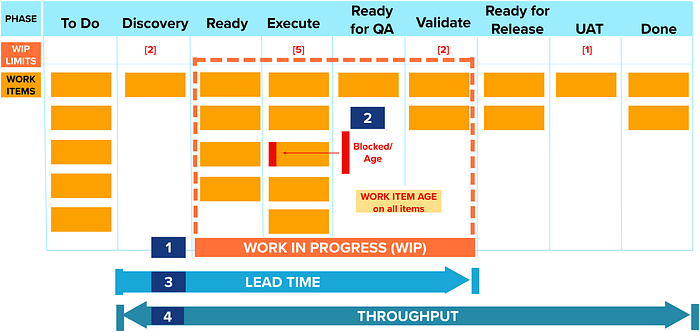
Photo by Alora Griffiths on Unsplash
The Ultimate Litmus Test: Go on Vacation
If the outcome of an effective Scrum Master is to create a high-performing, self-managing team, the litmus test may be — what happens when you are not there?
Mike Cohn describes a high-performing team as one that “sustainably exceeds expectations in achieving clear goals. To do this, team members engage in participative leadership, use minimal process, collaborate well, respect each other and their differences, trust one another, work with urgency and focus, manage healthy conflict, share a high sense of morale, and succeed or fail as a team.”
Does your team work at this level? Do they work at this level without you? For example, while you engage in your vacation activity of choice, hiking to volcanos and through rain forests, do they continue to participate fully in Scrum events, making collaboration opportunities and inspecting and adapting valuable elements of their day?
You have worked to build a team of motivated individuals who care passionately about technical excellence. But, while you enjoy your well-deserved Stay-cation, do they uphold their Definition of Done?
You feel your Product Owner understands and honors the concepts of sustainable pace, the importance of setting the vision and Product Goal, and the radical collaboration that Scrum encourages. But, when you are on the beach sipping your slow roast and watching the sunrise, does your Product Owner continue to demonstrate solid Agile citizenship, or do they take the opportunity to slip into anti-patterns like Part-Time PO or Dominant PO?
If you are not confident your team will exceed those expectations repeatedly, without burnout, while you are recharging your batteries, ask yourself, “Could I be doing more?”
Read on for three Power-Ups to drive change, achieve results, and promote sustainable Agile practices.
1. Power-Up Your Scrum Events
Scrum events often get watered down, reduced in duration or frequency, or even eliminated because the team feels they are not a valuable use of their time. They evolve into technical discussions rather than opportunities to inspect and adapt. Pick one event and dig into making it a powerful and engaging conversation with actionable impact. Read on to learn how to power up your Retrospectives.
Retrospective: “Doing Scrum or Kanban is not the goal. Continuous learning is.”
So says Henrik Kniberg of Spotify, Lego, and Crisp. So, if you are not holding strong and insightful retrospectives, start now. This action is the key to improving your agile fluency and provides a forum for the people responsible for the work to make suggestions to improve it.
Suppose you think only of the standard three questions to a solid retrospective. In that case, I invite you to review Esther Derby’s classic book “Agile Retrospectives, Making Good Teams Great,” which highlights the 5 phases of a retro. I find it nearly impossible to conduct solid and insightful retrospectives without needing all the time in the suggested timebox, particularly if I am using this framework to create the most value.
- Set the Stage: Give people time to get centered with a quick connection exercise that can help shift the focus to the event.
- Gather Data: Help everyone refresh their memory by noting milestones or notable events during the Sprint. Then, open it up for their comments. Mix up the format. Instead of the same three questions (what went well, what didn’t, and what do we want to do about it), consider formats like the Sailboat retro that will draw different insights from your team given your observations and the current climate.
- Generate Insights: Why did things happen the way they did? Identify patterns and look for the big picture. Scrum Masters often do not spend enough time here, eliminating the one-offs and watching for trends.
- Decide What to Do: Picking a few issues to improve might be easy, but the intent is to create concrete action plans for improvement and a WOW! factor would be planning how to measure those improvements. If this is intriguing you, there are thousands of sources online to go further.
5. Close the Retro: Clarify the actions, call out kudos, and conduct a short retro of the retro will give you, the Scrum Master, a clear landing strip and your own actionable items for improvements.
Want more? Consider investigating how to power up other events. Here’s a great webinar on 10 Tips to Facilitate Effective Sprint Reviews.
2. Replace Velocity with Throughput
Velocity has long been misunderstood and misapplied. I equate using Velocity as a productive metric to being as impractical as balancing my checkbook using my budget and not my actual expenditures. There is no rationale I have heard that convinces me that Velocity, typically based on an ambiguous story point, is anything other than what it was intended — one gauge to compare today’s outlook with yesterday’s weather. And, like weather forecasting, Velocity is fraught with unforeseen environmental changes that can systematically disrupt a plan without warning.
Followers of Scrum.org will note that any lingering emphasis on using Velocity is transitioning to focus on flow. (Thank you, Ken Schwaber, et al!) So, to up your game with metrics, move away from Velocity, and track the following four metrics: Work in Progress, Work Item Age (Blocked/Age), Lead Time, and Throughput.

Image by Author, original credit to Scrum.org
1. Work in Progress: Limiting Work in Progress is a practice that aims to reduce and stabilize work underway. It improves your ability to make choices about enabling flow, provides predictability, and is essential to enhance focus and diminish waste and context switching.
2. Blocked/Age: Highlight work that isn’t moving within the stage where the work is blocked. Using this practice tracks the age of an item within each stage to provide a more accurate and complete picture of how work is moving from one step to the next.
3. Lead Time: Lead time is the time between two points, such as creating an idea or request and when the customer can benefit from the solution. It is an essential contributing factor to customer satisfaction. In a workflow tool, you can measure Lead Time as the duration between an item’s creation date in a Product Backlog to the date it is declared Done.
4. Throughput: Throughput measures the number of issues completed for a chosen time frame, a day, a week, or a month, for example. Understanding throughput helps plan capacity, just like you might see in a grocery store queue. For example, some people with a large order may take more time, while others may have only a few items. Calculating the average throughput indicates the number of open lanes required to keep the flow of customers moving through check-out.
3. Break out of your own experience
Find opportunities to work with teams in multiple domains, outside of software and with varying levels of agile fluency. Learn to frame (and reframe) the problems you observe and learn to use various tools and techniques that can help you coach others in the job to be done.
Scrum is an intentionally incomplete framework. It does not specify everything needed to build and deliver a product. Instead, the framework holds space within which you can deploy various processes and techniques to solve problems.
Dozens of complementary techniques and practices can help you coach developers, Product Owners, and stakeholders. Consider these three common problems and how complementary methods can help power up your coaching.
If the problem is…
Balancing ad hoc support work with planned work or having disparate items in a team backlog rather than a Product Backlog: Consider helping your team implement Scrum with Kanban or Kanban to improve workflow, balance workload, and remove waste. These frameworks are not alternatives for people who don’t want to do the work of creating a healthy ecosystem and a team who will uphold the Scrum Framework. They require discipline in their different practices and measures to ensure success.
Recentering the Product Owner and Product Backlog around user-centered value: Consider practices based on Design Thinking and other user-centered practices, such as Service Blueprinting, Jobs to Be Done, or Customer Journey Mapping.
Creating a backlog with a clear Product Goal: Consider using structured exercises for refinement like Ellen Gottesdeiner’s “7 Product Dimensions”. Gojko Adzic’s powerful “Impact Mapping” or Theresa Torres’ Opportunity Mapping.
Wrap-Up
Who is best positioned to coach the organization that impacts your Scrum Team? YOU. Don’t delegate coaching opportunities to people outside your team unless you have tried everything possible to impact and influence others. Not only does this improve your coaching competency, it can also shape your professional brand and lead to more challenging and rewarding opportunities. If you are uncomfortable leaning into coaching others, invest in yourself with professional coaching programs such as Co-Active, ORSK, or ICAgile’s Coaching track that help you weave all your skills into serving as a role model of agile values and principles to others. After all, you may be the only Scrum Guide your team reads.
~Julee Everett
Live your truth; hone your craft; show your thanks
